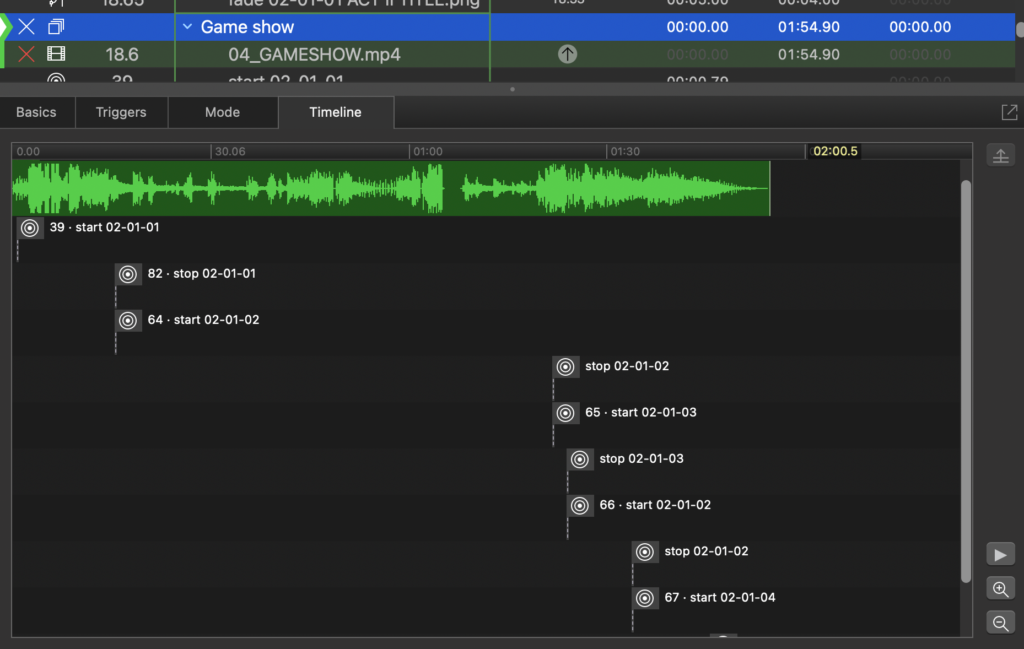Apologies, I intended to update on Monday, but we were working all day and I had other commitments in the evening.
30th September
This was a full 9am–5pm day at the Capitol, partly as a training day, but also to work through some production details for the show. The training wasn’t as RMIT-focused as I’d originally expected, but it was good to meet a few more people involved with RMIT Culture, as well as some others who will be running various parts of the show.
My knowledge of Qlab is really coming along; I was surprised how easy it was to figure out how to trigger the Pharos system from Qlab, using UDP messages sent over the network. It just required the IP address and port number to be entered, and a plain text message to match the trigger message in the Pharos project. Cues from Qlab trigger the lighting timelines instantly; in fact, it’s so instant that we had to build in a delay in order to synchronise with the projector’s latency of ~200ms.
Another Qlab technique came from my colleague Simon, who showed me how to create timeline groups:

By default, all cues in a timeline group play simultaneously, but using a pre-wait time, cues can be scheduled, and even dragged around the timeline within the interface. In the above example, lighting cues have been synchronised with the audio; this could have been programmed as a single timeline in Pharos Designer, but for this use case, it’s more convenient to have each state as a separate timeline, triggered from Qlab. This also makes it easier to move things around if we end up re-cutting the audio.
We spent quite some time testing one small group of cues in order to get the aforementioned latency right, and will apply the latency to the rest of the lighting triggers using pre-wait times. Coupled with my new knowledge about timeline groups, this will be much easier to achieve than I initially expected.
3rd October
This was to potentially be a day spent in the residency space, but as the space was unavailable due to filming, I visited Honor’s house, which was more convenient as she only lives one suburb over. This was a productive session, and I managed to use the techniques I learned on Friday to tighten up the Qlab project and start creating timeline groups for all of the cues. I was able to connect a projector to my laptop—which has been decided as the computer that will control the audio, video, and lighting cues for the show itself—in order to test.
5th October
Today was another day spent at Honor’s house working on cues. I created some new lighting timelines, as there are some newly edited voice lines that needed articulation with lights. After this, I resumed cleaning up the Qlab project, reading through the script and making sure cues were named correctly. I didn’t finish this, but it’s mostly for readability / convenience, so our plan to run through the draft cues in the residency space on Friday shouldn’t be affected.